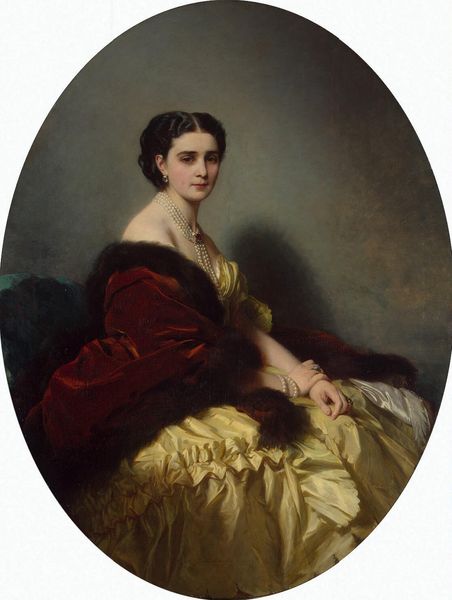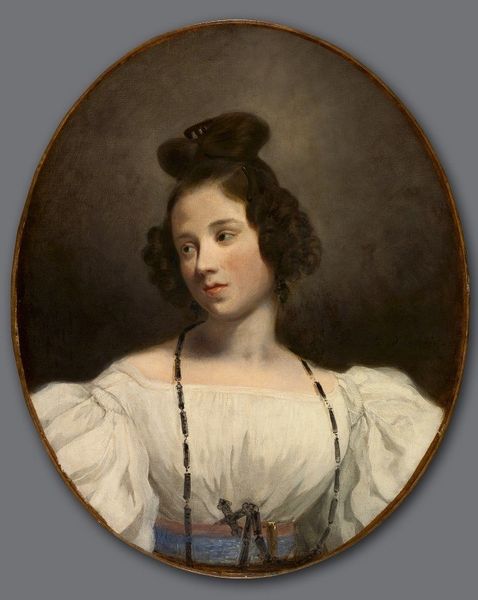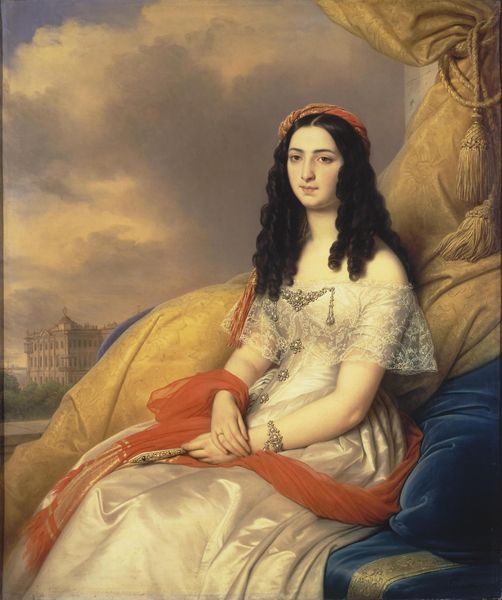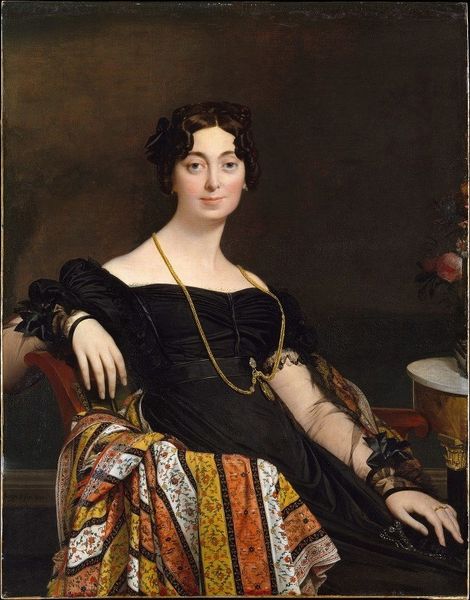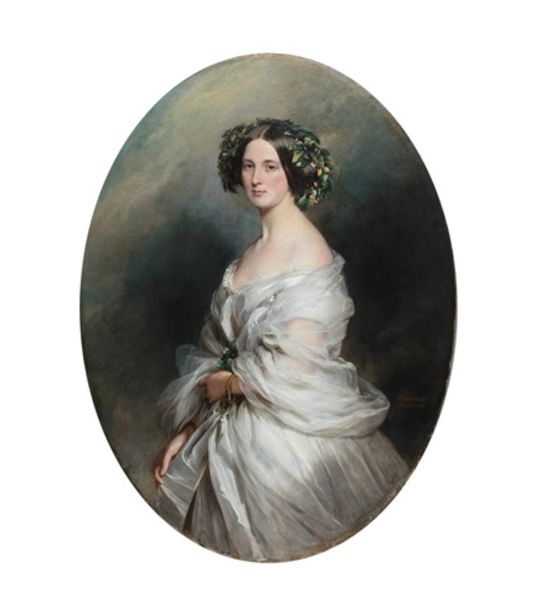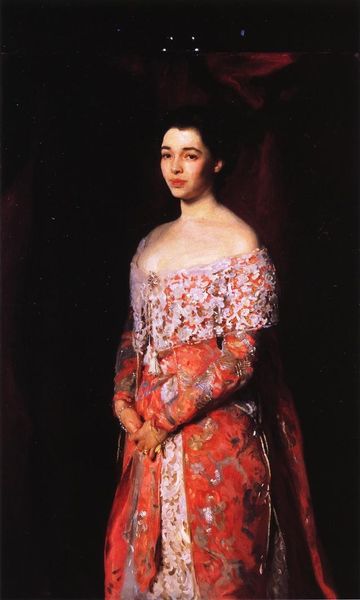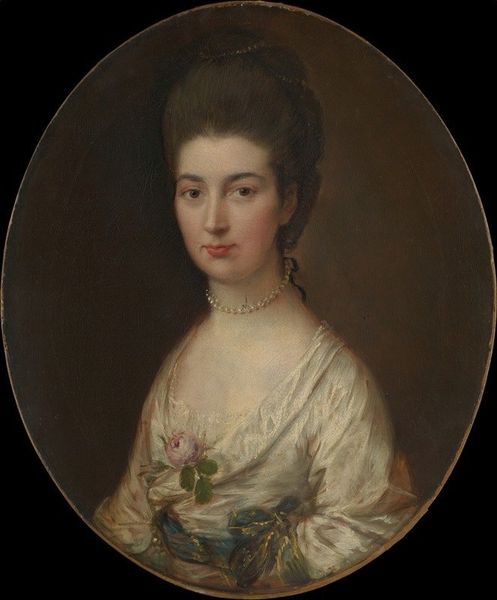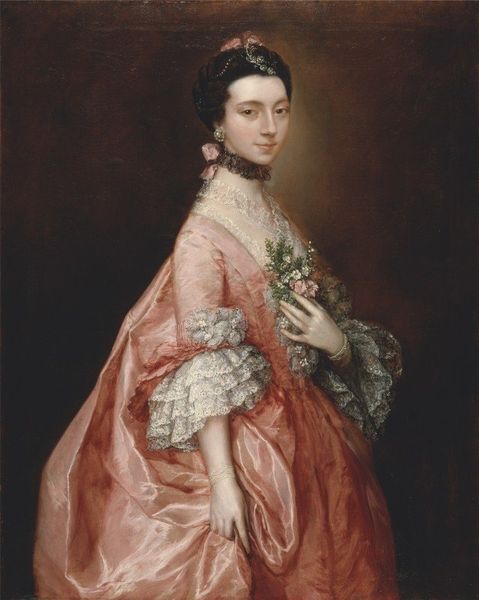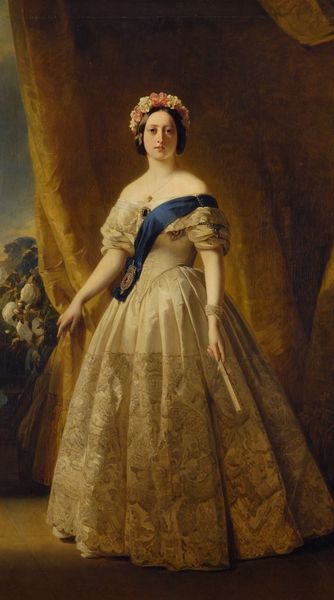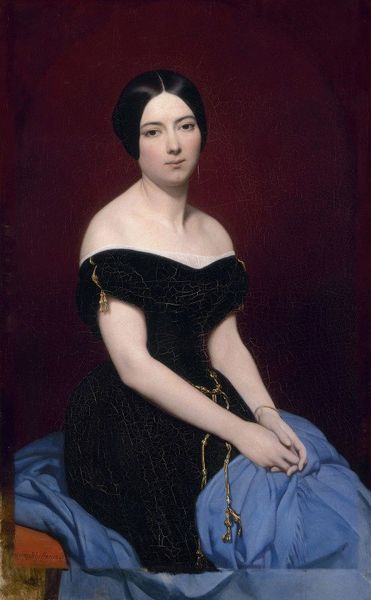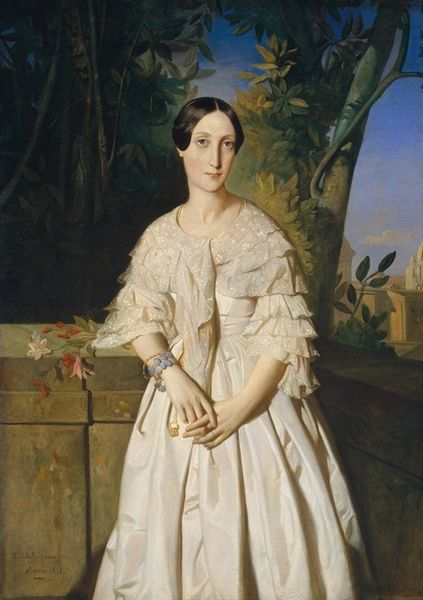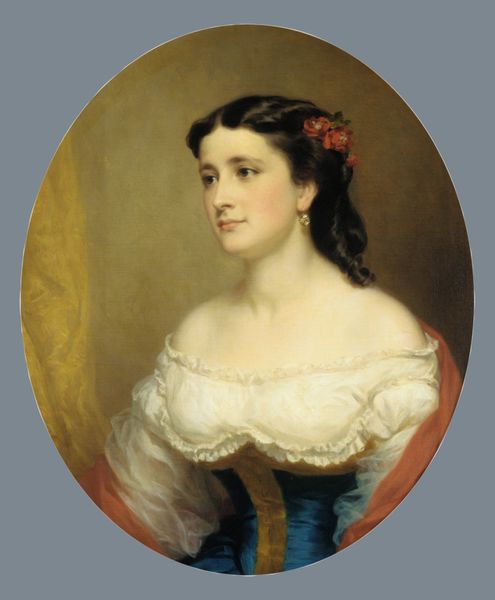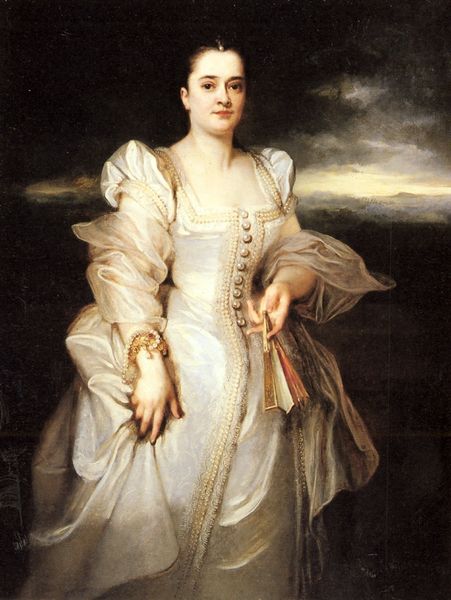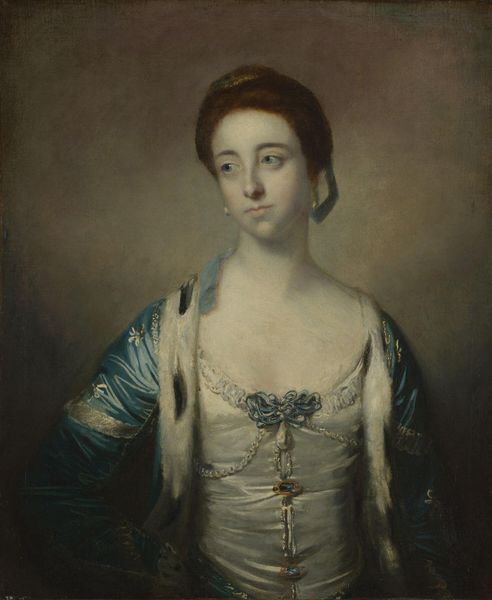
painting, oil-paint
#
portrait
#
figurative
#
painting
#
oil-paint
#
figuration
#
romanticism
#
history-painting
#
academic-art
#
portrait art
#
realism
Copyright: Public Domain: Artvee
Curator: Well, she certainly appears a reserved figure. The painting's coolness seems to stem not just from the blue of her dress but from her overall demeanor. Editor: This is "Portrait Of Marie-Célina Brieu," created in 1846 by William Bouguereau. Note the oval format and the slightly softened realism—typical of his academic style. Curator: The rose she holds is interesting, and contrasts nicely with the cool palette—almost like a hidden language. I am immediately struck by how she delicately holds that single bloom, which to me suggests ideas of fragile beauty and transient life. What do you make of that gaze, though? It's direct, almost challenging, but does not seem to offer an open emotional invitation. Editor: And she stands next to what seems to be an overturned urn. Death? Destruction? Or maybe it suggests the untended ruins of an ancien régime? Curator: It could be a commentary on loss and change. However, I’m more interested in the brooch at her throat; a piece depicting classical figures. Its presence tells me about her values. This cameo perhaps mirrors an ideal self, where rationality and measured composure—typical Greek virtues—are emphasized and on display. Editor: Indeed. Especially within the context of 1846 France. The Bourbon monarchy had been restored, lost, and now with Louis-Philippe, another monarchy was desperately trying to reinvent itself amid revolution. How does she perform or defy the expected role of women within that narrative? Curator: Good question! Is her formality a statement, a protection? Women of the period were caught in very specific webs of expectation, and here perhaps Marie-Célina projects not individuality, but instead, acceptance of class and convention. In visual culture, the averted gaze can imply feminine virtue and humility. She breaks with that expectation here. She engages! Editor: Right. She's definitely participating in her own visual representation, rather than being a passive object of art. A subtle act of self-definition, perhaps. Still, even in the painting, a sense of restrained melancholy pervades, doesn’t it? It is indicative of Romanticism generally, even here within Academic painting circles. Curator: I find her stance thought-provoking given what we've discussed: she embraces both control and fragility, making her fascinating, despite the traditional form. It demonstrates the strength residing quietly in constraint, wouldn't you say? Editor: Absolutely. This portrait, ultimately, speaks to the tensions of a historical moment, captured in the figure of a woman negotiating her identity in that moment, making it an act of resistance.
Comments
No comments
Be the first to comment and join the conversation on the ultimate creative platform.
